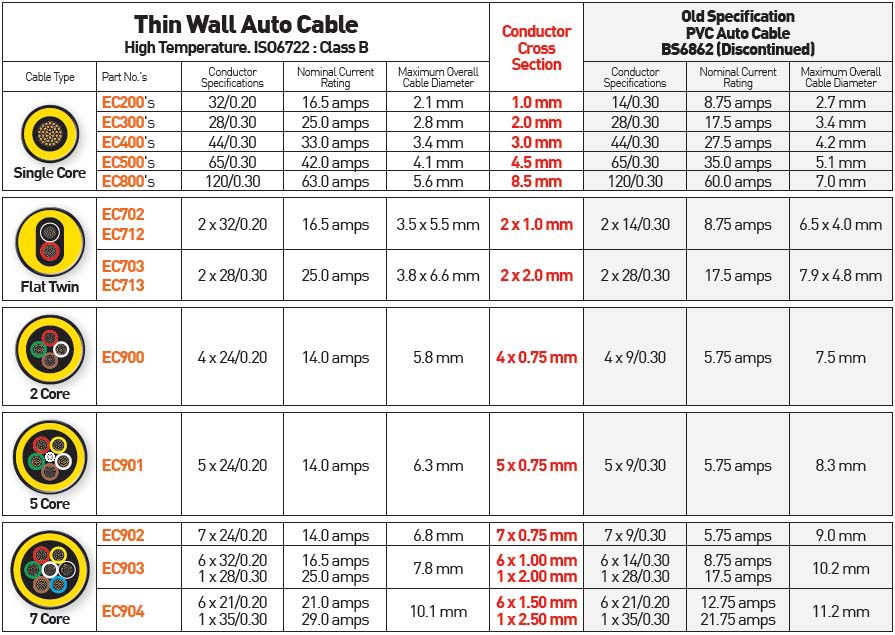In the 1970's we were driving around in cars like the Austin Allegro, Vauxhall Viva and Ford Cortina. These and all other vehicles were manufactured with simple wiring produced using low voltage automotive PVC cable. This cable was manufactured in accordance with the British Standard 6862 Part 1 1971.
In the mid 80's manufacturers started to specify more electrical components and feautures in their vehicles and as a result the wiring harnesses were getting heavier and were starting to take up too much space.
A new type of cable was needed to meet the ever increasing requirement to fit even more electrical components in the future. The new cable needed to meet the followin requirements;
- 30% Lighter in Weight
- Save Space
- More Resistant to Abrasion
- Have a Higher Temperature Rating (105°)
- Resistant to Petrol, Diesel, Oils & Diluted Acids
- Good Resistance to Moisture
- Meets European "End of Vehicle Life" Directive
A new cable was developed and 20 years later is now used extensively by most vehicle builders throughout Europe. The international standard is ISO6722 and is known as "Thin Wall High Temp Cable" or "Thin Wall Hard Grade Cable". As a result of this new European Standard, British Standards withdrew BS6862 in October 2004.
The demand for the old style PVC Cable has reduced year on year over the last 10 years. The only remaining sector of the Automotive Industry that is still using this cable is the UK & Irish Aftermarket, which has been slow to make the change to the new cables.
The following cross reference and frequently asked questions section is intended to guide users to the correct new cables and hopefully allay any concerns over the change.
Frequently Asked Questions
Q How can Thin Wall carry more Amps but is thinner?
A Modern Thin Wall Cables are produced using high performance insulation compound that allows a thinner wall yet gives a higher Am rating.
Q Is the Thin Wall Cable suitable for use at low and high temperatures?
A Thin Wall Cable has a much greater temperature range than the Old Style PVC Cable. Thin Wall will operate down to -40°C and up to 105°C with exercusions up to 120°C.
Q Is the sheath on the Twins and Multicores 105°C?
A The sheath on the Twins and Multicores has no electrical properties, its main purpose is to reist abrasion, help in cable routing and therefore for reasons of cost os only rated at 70°C.
Q Can I crimp my existing terminals onto This Wall Cable?
A Most crimp tools are suitable for use with Thin Wall cable. If you are unsure then contact your terminal and tool supplier.



